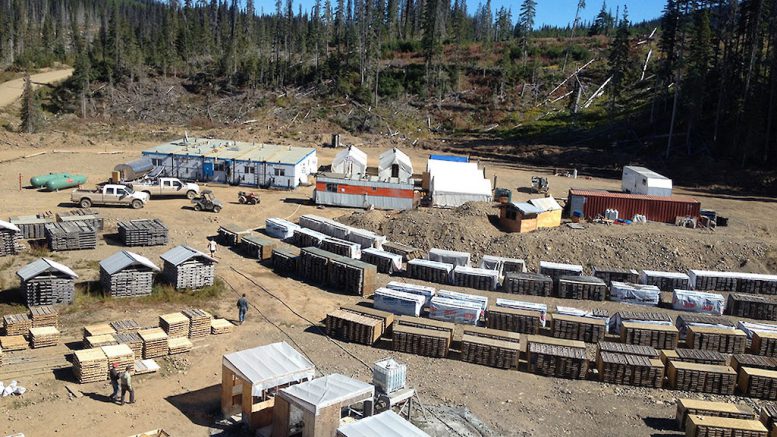Surge Copper (TSXV: SURG; US-OTC: SRGXF) has released a preliminary economic assessment (PEA) for its Berg project in central British Columbia that outlines a long-life asset with total payable production of 3.7 billion lb. of copper.
The study, published on Tuesday, puts preproduction capital costs at $2 billion and the project’s mine life at 30 years. The PEA calculates Berg’s after-tax net present value at $2.1 billion, using an 8% discount rate. The project’s internal rate of return is pegged at 20%, based on long-term metal prices of US$4 per lb. copper, US$15 per lb. molybdenum, US$23 per oz. silver, and US$1,800 per oz. gold.
Life-of-mine annual payable production is estimated at 191 million copper equivalent lb., including 121 million lb. of copper.
“The Berg project now represents one of the largest primary copper development projects in Canada, and this PEA confirms some of the unique features and key selling points of the project,” said Surge CEO Leif Nilsson in a release.
He added that the project can deliver critical minerals needed for the global energy transition, link into the existing hydroelectric power grid and has a strong economic return profile under several long-term metal pricing assumptions.
The company is earning a 70% interest in Berg from Centerra Gold (TSX: CG; NYSE: CGAU).
The study outlines a large, open-pit mining operation with a mineral inventory of about 978 million tonnes grading 0.22% copper, 0.02% molybdenum, 4.5 grams silver, and 0.02 grams gold, on average. Mining would be sequenced into six phases that target higher-value areas of the deposit earlier in the mine life and stockpiles lower-grade material for future mill feed.
A two-year construction period is estimated for the mine, requiring sustaining capital of $1.7 billion over its life and reclamation and closure costs of $200 million.
Berg’s mill and concentrator processing plant would operate at a 90,000-tonne-per-day capacity and produce separate copper and molybdenum concentrates through a conventional sulphide flotation and molybdenum separation flowsheet.
Surge estimates it would cost about $6 to $8 million to advance Berg to the prefeasibility stage over an 18-month period.
The Berg site is just west of Surge’s Ootsa advanced exploration property containing the Seel and Ox porphyry deposits, and Imperial Metals’ (TSX: III) Huckleberry copper mine. The road- accessible project is about 70 km southwest of the town of Houston. It’s also located within the traditional territories of the Cheslatta Carrier and Wet’suwet’en Nations, and near the communities of the Skin Tyee, Nee Tahi Buhn, and Witset First Nations.
An updated resource, filed on June 7 is also included in the PEA. Measured and indicated resources at Berg are now pegged at 1 billion tonnes grading 0.23% copper, 0.03% molybdenum, 4.6 grams silver per tonne and 0.02 gram gold for 5.1 billion lb. of copper, 633 million lb. of molybdenum, 150 million oz. silver and 744,000 oz. of gold.
Inferred resources come to 542 million tonnes grading 0.17% copper, 0.02% molybdenum, 3.7 grams silver and 0.02 gram gold for about 2 billion lb. copper, 288 million lb. molybdenum, 65 million oz. silver and 284,000 oz. gold.
Surge shares were down more than 10% in mid-day trading in Toronto at 13¢ apiece, almost reaching the bottom of the company’s 52-week range of 12¢ and 22¢. It has a market capitalization of $25.2 million.


Be the first to comment on "Surge Copper PEA outlines three-decade mine at Berg in BC"